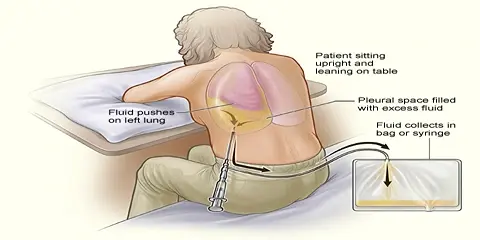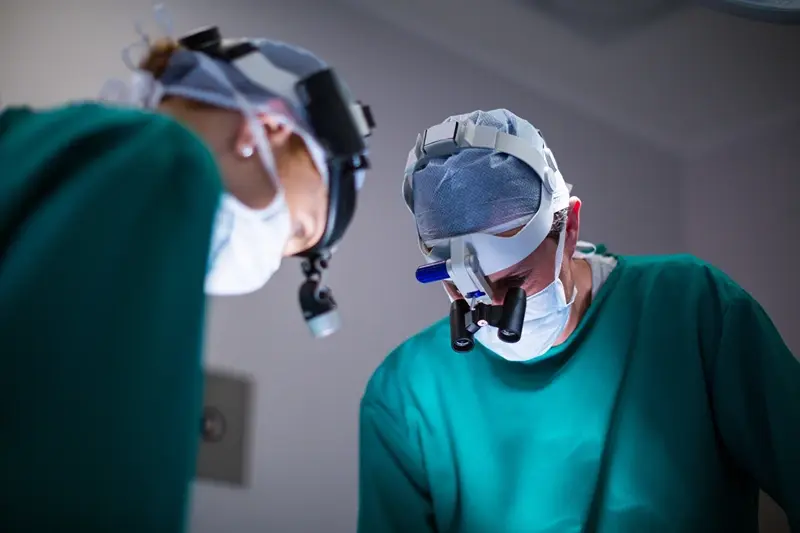Thoracentesis in Dubai at DRHC
Thoracentesis, also known as pleural tap, is a medical procedure used to remove fluid or air from the pleural space, which is the area between the lungs and the chest wall. This procedure is commonly performed to diagnose or treat conditions that cause fluid buildup (pleural effusion) or air accumulation (pneumothorax) in the pleural cavity.
Thoracentesis is a medical procedure used to remove excess fluid or air from the pleural space, the space between the lungs and the chest wall. This procedure is typically performed to diagnose and treat conditions such as pleural effusion (accumulation of fluid in the pleural space) or pneumothorax (presence of air in the pleural space).
Why Thoracentesis is Performed
Thoracentesis can be both diagnostic and therapeutic. It is performed for various reasons, including:
- Diagnostic Purposes: To analyze pleural fluid and diagnose the underlying cause of pleural effusion, such as infections, malignancies, heart failure, or inflammatory diseases.
- Therapeutic Purposes: To relieve symptoms such as shortness of breath, chest pain, and cough caused by fluid or air accumulation.
Indications for Thoracentesis
- Unexplained pleural effusion
- Suspected infection (e.g., pleuritis, empyema)
- Suspected malignancy
- Symptomatic relief of large pleural effusions
- Pneumothorax requiring intervention
The Thoracentesis Procedure
- Preparation: The patient is typically positioned sitting upright, leaning slightly forward. The skin over the puncture site is cleaned and sterilized.
- Local Anesthesia: A local anesthetic is injected to numb the area where the needle will be inserted.
- Needle Insertion: A needle or catheter is carefully inserted through the chest wall into the pleural space, guided by ultrasound to ensure accuracy and safety.
- Fluid/Air Removal: Fluid or air is aspirated through the needle into a syringe or drainage bag.
- Post-Procedure Care: The puncture site is covered with a sterile dressing. The patient may be monitored for a short period to check for complications.
Risks and Complications
Thoracentesis is generally safe, but like any medical procedure, it carries some risks, including:
- Pain or discomfort at the puncture site
- Bleeding
- Infection
- Pneumothorax (collapsed lung)
- Re-expansion pulmonary edema (rare)
During a thoracentesis, the patient is usually seated or lying down, and the skin over the chest is cleaned and numbed with a local anesthetic. The healthcare provider then inserts a thin, hollow needle or catheter through the chest wall and into the pleural space. The excess fluid or air is then drained out through the needle or catheter, and a sample of the fluid may be sent to a laboratory for analysis.
In Dubai, thoracentesis is typically performed by healthcare providers who specialize in the treatment of lung conditions, such as pulmonologists or thoracic surgeons. The healthcare providers at the Dubai Thoracic Surgery Clinic, located at the Dr. Rami Hamed Center, have extensive experience in performing thoracentesis and work closely with a multidisciplinary team of healthcare professionals to provide comprehensive care for patients undergoing this procedure.
Click here to learn more about our surgical packages
.png?width=281&height=59&name=bookanappointment%20(1).png)
If you are in search of the best thoracic surgery in Dubai or a specialist thoracic & general surgeon in Dubai call +97142798200. DRHC Dubai provides the best thoracic surgeon in Dubai and the best doctor for thoracic surgery in Dubai.




.png?width=281&height=59&name=bookanappointment%20(1).png)




